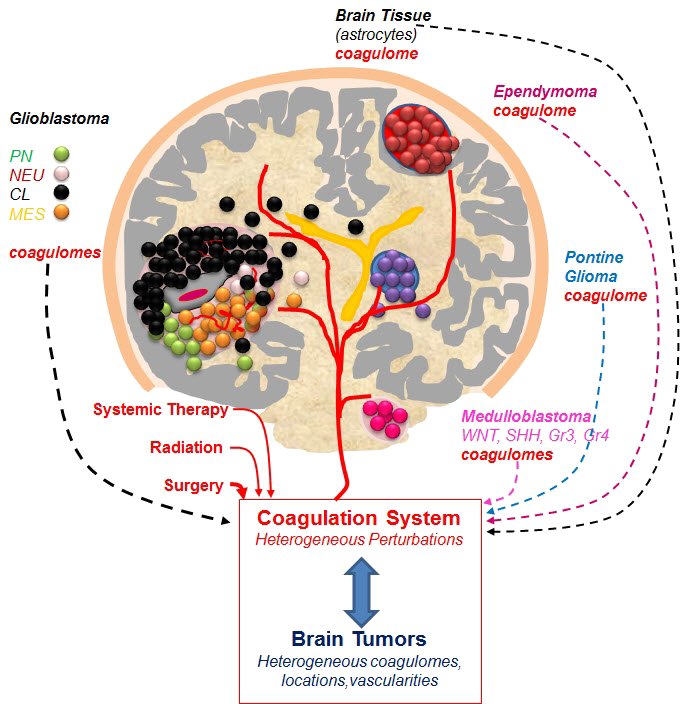
Figure 1.
Heterogeneity of Brain Tumors as a Possible Source of the Heterogeneous Nature of the Related Coagulopathies.
Brain is normally shielded from the coagulation system effectors by the blood–brain barrier (BBB), especially through the properties of the vascular wall. This barrier can be disrupted by injury or chronic pathology, such as cancer, and anti-cancer therapies (e.g. surgery), resulting in contact between brain parenchyma and coagulation factors in blood plasma. We postulate that these interactions could be more heterogeneous than currently thought and may lead to different mechanisms and consequences of coagulation system activation in specific pathological settings. Thus, cancers originate in different regions of the brain, where cells may possess different (currently unstudied) abilities to activate or respond to coagulation factors. Moreover, different brain tumors emerging in such distinct locations may differ in their abilities to activate coagulation. For example, such effects are pronounced and systemic in glioblastoma (GBM), but more subtle and mostly clinically unremarkable in medulloblastoma (MB). In addition, within specific tumor types, such as GBM, recent studies distinguished several molecular subtypes, such as proneural (PN), neural (NEU), classical (CL), and mesenchymal (MES) disease (symbols as indicated). Recent studies revealed that each of these subtypes expresses different repertoires of coagulation effector genes (coagulome).47 Similar diversity in coagulome has also been documented among subtypes of MB, such as wingless (WNT), sonic hedgehog (SHH), group 3 (G3) and group 4 (G4) tumors each driven by different oncogenic pathways. In MB more subtle interactions with the coagulation system may lead to subclinical effects. Finally, each tumor (especially GBM) may contain microregions and diverse cellular subpopulations that may have different coagulant properties. We propose that these factors may need to be considered when exploring the role of the coagulation system in brain tumor biology and the associated coagulopathy (see text).